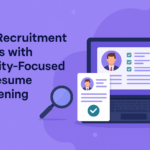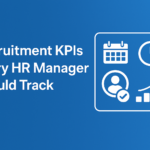The Best Fluffy Pancakes recipe you will fall in love with. Full of tips and tricks to help you make the best pancakes.
How to Speed Up Your Hiring and Why It Matters
Hiring the right people is key for any successful business. But what happens when finding those people takes too long? A slow hiring process can cause big problems. It can hurt your team’s spirit and your company’s bottom line. This guide will show you why fast hiring is important. We will also share tips to make your hiring faster and better.
Understanding Why a Fast Hiring Process is So Important
How a Slow Hiring Process Hurts Your Business
When hiring takes too much time, it creates recruitment bottlenecks. These bottlenecks mean jobs stay open for longer. Empty roles can slow down projects. They also put more work on your current team. This can lead to burnout and lower productivity. Improving your recruitment cycle time is vital for smooth operations.
A lengthy hiring process also makes you less competitive. Good candidates often get multiple job offers. If your process is slow, they might accept another offer before you decide. This means you lose out on top talent. Making recruitment workflow improvements helps you act faster. Quick streamlining candidate screening ensures you don’t miss great people.
The Advantage of Hiring Quickly and Effectively
Companies that hire quickly gain a real edge. Implementing smart hiring speed strategies helps you grab the best candidates first. Accelerating hiring decisions shows candidates you are serious and efficient. This speed also improves your company’s image as an employer. A good reputation attracts even more skilled applicants.
Fast and efficient hiring often leads to happier new hires. When candidates have a good experience, they are more likely to stay longer. Good hiring process optimization reduces employee turnover. This saves money on hiring and training new people again and again. Focusing on time-to-hire reduction is a smart move for long-term success.
Spotting the Signs of a Slow Hiring Process
Common Holdups in Hiring (Recruitment Bottlenecks)
Many things can cause a slow hiring process. These holdups are often called recruitment bottlenecks. One clear sign is jobs staying open for a very long time. If weeks or months pass with no hire, there’s likely a problem. Delays often happen when reviewing resumes or applications. This stage needs streamlining candidate screening to move faster.
Another common issue is scheduling interviews. If it takes many days or weeks just to set up interviews, it’s a big delay. Poor communication is another sign. Candidates might feel ignored or unsure about their status. These talent acquisition delays can cause good candidates to withdraw. A messy recruitment workflow makes these problems worse.
Table 1: Common Signs Your Hiring is Too Slow
| Sign | Why It Matters | Possible Solution |
|---|---|---|
| Jobs open for months | Losing productivity and top candidates | Review job requirements, improve sourcing |
| Long delays in screening CVs | Good candidates get hired elsewhere | Use screening tools, set clear criteria |
| Slow interview scheduling | Candidates lose interest | Use scheduling tools, block time for interviews |
| Poor communication with candidates | Damages employer brand, candidates withdraw | Set communication standards, use templates/automation |
| High candidate drop-off rate | Wasted effort, loss of talent pool | Analyze process stages, improve candidate experience |
Using Data and Feedback to Find Problems
Numbers can tell you a lot about your hiring speed. Tracking key data helps spot a slow hiring process. The most important number is ‘time-to-hire’. This measures the days from posting a job to getting an accepted offer. High time-to-hire often points to recruitment bottlenecks needing attention. Look for ways to achieve time-to-hire reduction.
Other numbers matter too. How many interview rounds do you usually have? Too many rounds can signal delays. Also, look at employee turnover, especially for new hires. If many new employees leave quickly, it might suggest rushed or poor hiring decisions due to previous




